I have searched this wonderfully informative website and learned much about Delta-Wye connections and why a phase shift in voltage would exist between the two. I am also aware that both Delta-Delta and Wye-Wye connections do not have this phase shift. My questions is: What is so important about this phase shift? Are there Pros/Cons?
-
2That 30 degree phase shift is not something someone decided to add in - its an inherent part of how the delta-wye transform works. Pros & Cons don't really factor into it... – brhans Jul 06 '16 at 18:30
-
See http://electronics.stackexchange.com/questions/191232/why-does-a-delta-wye-transformer-make-30-degrees-phase-shift. – Transistor Jul 06 '16 at 18:35
-
Thank you both for your prompt responses. Brhans: I am aware that the phase shift is a by-product of the function of the Delta-Wye. What I am asking is can said phase shift offer advantages? Does it fill a niche in the electrical world? Transistor: I had previously viewed the link you have sent, but thank you for taking the time to comment on my question. – BLUEJAYS13 Jul 06 '16 at 18:40
-
"I am also aware that both Delta-Delta and Wye-Wye connections do not have this phase shift." // Not true in general. Only transformers with a [vector group](https://en.wikipedia.org/wiki/Vector_group) of Yy0 and Dd0 have no phase shift. But transformers with a vector group of Yy6 and Dd6 have a phase shift of 180° between the line phasor voltage of one side compared with the respective line phasor voltage of the other side. On the other hand, there are delta-wye and wye-delta transformers with a phase shift of 30°, 330°, 150° and 210°. And there are delta-delta with 60°, 120°, 240° and 300°. – alejnavab Jan 13 '21 at 13:26
1 Answers
What is so important about this phase shift? Are there Pros/Cons?
Probably the main point is to be aware that there is a phase shift. For example, series connecting delta and wye secondaries will give strange results with the resultant midway (15°) between the other two. (That's from memory and needs confirmation.)
One useful application is to generate a DC with less ripple. A standard 3-phase rectifier will give 6-pulses of DC per 360°.
Figure 1. 3-phase rectification gives six pulses per 360°.
By rectifying both delta and wye secondaries we can get 12-pulses per 360° and further reduce ripple.
Is it possible to obtain more pulses than twice the number of phases in a rectifier circuit? The answer to this question is yes: especially in polyphase circuits. Through the creative use of transformers, sets of full-wave rectifiers may be paralleled in such a way that more than six pulses of DC are produced for three phases of AC. A 30° phase shift is introduced from primary to secondary of a three-phase transformer when the winding configurations are not of the same type. In other words, a transformer connected either Y-Δ or Δ-Y will exhibit this 30° phase shift, while a transformer connected Y-Y or Δ-Δ will not. This phenomenon may be exploited by having one transformer connected Y-Y feed a bridge rectifier, and have another transformer connected Y-Δ feed a second bridge rectifier, then parallel the DC outputs of both rectifiers. (Figure below) Since the ripple voltage waveforms of the two rectifiers' outputs are phase-shifted 30° from one another, their superposition results in less ripple than either rectifier output considered separately: 12 pulses per 360° instead of just six:
Figure 1. 12-pulse rectifier generated by delta and wye secondaries.
As I hinted earlier, I think further improvement can be obtained by series connecting delta and wye secondaries to create other phases for even more improvement.
Diagrams and quotation from Lessons In Electric Circuits -- Volume III where there is a lot more information.
- 168,990
- 12
- 186
- 385
-
Thank you for the time and effort you took to answer my question transistor! – BLUEJAYS13 Jul 07 '16 at 17:41
-
This helped me understand a comment by an Electroboom video explaining how high voltage DC was created from 3 phase high voltage AC. – drescherjm Oct 13 '20 at 13:06
-
An important point of this configuration ... is also the "power factor" of the use of Delta-Wye transformer ... which is nearest unity. Very important when diodes are replaced by thyristors. – Antonio51 Jul 12 '21 at 08:57

